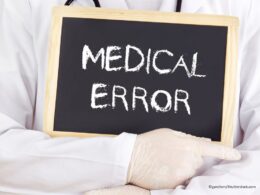This is an excerpt of the paper “Rethinking Use Of Air-Safety Principles To Reduce Fatal Hospital Errors”, with the title above, highlighting the message in question.
Health Affairs
Andy Pasztor, Adam Andersen
AUGUST 26, 2022
Executive Summary by:
Joaquim Cardoso MSc.
transform health — institute for continuous transformation
patient safety unit
August 26, 2022
Three Strategies To Improve Safety
Experts point to health care’s failures to fully incorporate three fundamental strategies relied on by airlines and their federal regulators:
- 1.extensive voluntary reporting of serious incidents;
- 2.prompt and widespread dissemination of information about life-threatening hazards; and
- 3.user-friendly equipment designs intended to prevent a repeat of the same fatal errors.
Systemic lapses in hospital safety were highlighted by the Institute of Medicine’s seminal 1999 report, “To Err is Human,” which sparked the modern patient safety movement.
Over the next two decades, Atul Gawande’s internationally acclaimed book, The Checklist Manifesto, and follow-on publications popularized a bevy of aviation-derived safeguards.
But health care needs to move beyond those early steps.
Undue emphasis on medical checklists, mimicking an aviation procedure initially developed many decades ago, frequently impedes reliance on newer and more effective safety techniques.
Undue emphasis on medical checklists, mimicking an aviation procedure initially developed many decades ago, frequently impedes reliance on newer and more effective safety techniques.
Checklists’ usefulness in medicine has been oversold, according to Raj Ratwani, director of MedStar Health’s National Center for Human Factors in Healthcare.
After initially embracing them above other safety practices, physicians and hospital administrators have opted for more sophisticated safety tools, including robust data sharing, enhanced teamwork, and greater responsibilities for junior staff.
Checklists’ usefulness in medicine has been oversold, …
After initially embracing them above other safety practices, physicians and hospital administrators have opted for more sophisticated safety tools, including robust data sharing, enhanced teamwork, and greater responsibilities for junior staff.

1.Non-Punitive Reporting
Non-punitive incident reporting and swift distribution of details about dangerous “near misses” helped revolutionize modern air safety.
Too often, however, those concepts falter in hospital settings due to institutional opposition or fear of management reprisals.
“Progress has been very slow reducing deaths” by applying proactive air-safety practices “to nearly all medical specialties,” according to David Mayer, head of the safety research arm of Maryland-based MedStar Health.
“When it comes to acknowledging and documenting mistakes,” he says, “we are still not where aviation is.”
“Progress has been very slow reducing deaths” by applying proactive air-safety practices “to nearly all medical specialties,” …
“When it comes to acknowledging and documenting mistakes,” he says, “we are still not where aviation is.”
Christopher Hart, a former chairman of the NTSB, explains it more bluntly. “Information sharing in health care is pitiful compared to aviation.”
“Information sharing in health care is pitiful compared to aviation.”
Promoting transparency and empowering reporting of treatment errors “requires a major cultural change,” says Kathleen Bartholomew, a former nurse and hospital manager, but “that mindset never took hold” in much of medicine.
“Nurses are still getting fired for bringing up safety concerns,” she adds, while physicians often remain reluctant to criticize colleagues.
“Nurses are still getting fired for bringing up safety concerns,” she adds, while physicians often remain reluctant to criticize colleagues.
Disincentives for safety reporting prompted nationwide headlines during the recent trial of a former Tennessee nurse, RaDonda Vaught, who was convicted of two felonies for a fatal medication error.
Various health care organizations such as the American Nurses Association and the American Hospital Association expressed concern that criminalization of treatment errors would further impede voluntary reporting and data sharing. (She was sentenced to three years’ probation.)
Various health care organizations such as the American Nurses Association and the American Hospital Association expressed concern that criminalization of treatment errors would further impede voluntary reporting and data sharing.
Names mentioned
To Err is Human — Building a Safer Health System
Institute of Medicine (US) Committee on Quality of Health Care in America; Editors: Linda T. Kohn, Janet M. Corrigan, and Molla S. Donaldson.
Raj Ratwani, director of MedStar Health’s National Center for Human Factors in Healthcare.
Atul Gawande’s internationally acclaimed book, The Checklist Manifesto,
Christopher Hart, a former chairman of the NTSB
Kathleen Bartholomew, a former nurse and hospital manager
David Mayer, head of the safety research arm of Maryland-based MedStar Health
Christopher Hart, a former chairman of the NTSB
Related Articles












